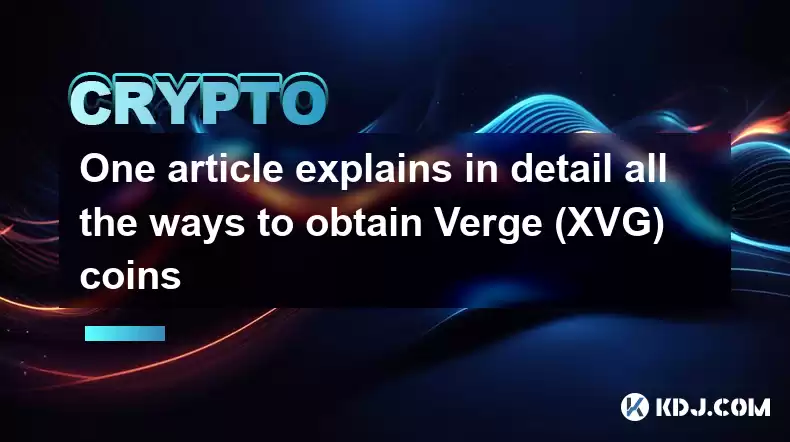-
 Bitcoin
Bitcoin $117700
-0.03% -
 Ethereum
Ethereum $3805
0.49% -
 XRP
XRP $3.098
-1.00% -
 Tether USDt
Tether USDt $1.000
0.03% -
 BNB
BNB $792.8
-1.72% -
 Solana
Solana $177.9
-1.95% -
 USDC
USDC $1.000
0.02% -
 Dogecoin
Dogecoin $0.2202
-1.55% -
 TRON
TRON $0.3278
-2.92% -
 Cardano
Cardano $0.7641
-2.43% -
 Hyperliquid
Hyperliquid $42.21
-2.68% -
 Sui
Sui $3.758
-1.58% -
 Stellar
Stellar $0.4080
-3.21% -
 Chainlink
Chainlink $17.75
-0.33% -
 Bitcoin Cash
Bitcoin Cash $591.8
4.96% -
 Hedera
Hedera $0.2561
-3.09% -
 Avalanche
Avalanche $23.34
-4.24% -
 Litecoin
Litecoin $110.7
1.96% -
 UNUS SED LEO
UNUS SED LEO $8.956
-0.01% -
 Toncoin
Toncoin $3.410
0.79% -
 Ethena USDe
Ethena USDe $1.001
0.03% -
 Shiba Inu
Shiba Inu $0.00001288
-1.82% -
 Uniswap
Uniswap $10.07
-2.06% -
 Polkadot
Polkadot $3.807
-2.27% -
 Monero
Monero $308.2
-2.15% -
 Dai
Dai $1.000
0.03% -
 Bitget Token
Bitget Token $4.521
-0.30% -
 Pepe
Pepe $0.00001134
-1.52% -
 Cronos
Cronos $0.1457
0.65% -
 Aave
Aave $274.9
-2.47%
One article explains in detail all the ways to obtain Verge (XVG) coins
One method of acquiring Verge (XVG) coins involves purchasing them from reputable cryptocurrency exchanges such as Binance, where users can deposit fiat currency and use it to buy XVG at prevailing market rates.
Jan 05, 2025 at 01:22 pm

Key Points
- Understand the concept of Verge (XVG) and its purpose.
- Identify the various ways to acquire Verge (XVG) coins.
- Explore the advantages and disadvantages of each acquisition method.
- Recognize the safety and security considerations when obtaining XVG.
- Learn about reputable exchanges and platforms for XVG transactions.
Ways to Obtain Verge (XVG) Coins
1. Purchase XVG from Cryptocurrency Exchanges
- Register on reputable exchanges such as Binance, KuCoin, or HitBTC.
- Verify your identity through KYC (Know-Your-Customer) procedures.
- Deposit fiat currency (e.g., USD, EUR) into the exchange account.
- Use the deposited funds to purchase XVG coins at the prevailing market rate.
2. Buy XVG from Peer-to-Peer (P2P) Marketplaces
- Utilize platforms like LocalBitcoins or Bisq to connect with individual buyers or sellers.
- Negotiate prices and payment methods (e.g., cash, bank transfer, gift cards).
- Ensure safety precautions by meeting in person in secure locations or using reputable escrow services.
3. Earn XVG as Rewards for Mining or Staking
- Participate in Proof-of-Work (PoW) mining using specialized hardware (ASICs or GPUs).
- Join staking pools to earn rewards for holding XVG in a secure wallet.
- Consider the energy consumption, hardware costs, and potential profitability of mining.
4. Accept XVG as Payment for Goods or Services
- Promote the acceptance of XVG as a form of payment for your business or freelance work.
- Utilize XVG-compatible payment processors or create custom invoices for XVG transactions.
- Monitor price fluctuations and convert XVG to fiat currency when needed.
5. Receive XVG as Tips or Donations
- Enable XVG receiving addresses on social media accounts, websites, or donation platforms.
- Promote your XVG address by sharing it publicly or using QR codes.
- Be aware of potential scams or requests from unknown individuals.
6. Participate in Airdrops or Giveaways
- Join online campaigns or follow crypto-related channels for potential airdrops or giveaways.
- Provide necessary information (e.g., wallet address, email address) as required.
- Verify the legitimacy of airdrops and exercise caution against fraudulent activities.
Safety and Security Considerations
- Store XVG coins in a secure hardware wallet or a software wallet with strong encryption.
- Enable two-factor authentication (2FA) on exchanges or wallets for added security.
- Be cautious of phishing scams and do not share sensitive information with untrusted sources.
- Research reputable exchanges and platforms before transacting with them.
FAQs
What is Verge (XVG)?
Verge (XVG) is a decentralized cryptocurrency that focuses on privacy and security. It utilizes multiple anonymity features, including Tor integration and stealth addresses, to protect user data and transactions.
What are the benefits of using XVG?
- Enhanced privacy and anonymity compared to other cryptocurrencies.
- Fast and cost-effective transactions with low fees.
- Support for a wide range of wallets and payment processors.
- Use cases in e-commerce, gaming, and remittance services.
What are the potential risks associated with XVG?
- Volatility in market value, as with all cryptocurrencies.
- Concerns regarding the effectiveness of XVG's anonymity features.
- Reliance on its small developer community for maintenance and updates.
Disclaimer:info@kdj.com
The information provided is not trading advice. kdj.com does not assume any responsibility for any investments made based on the information provided in this article. Cryptocurrencies are highly volatile and it is highly recommended that you invest with caution after thorough research!
If you believe that the content used on this website infringes your copyright, please contact us immediately (info@kdj.com) and we will delete it promptly.
- XRP, AI, and Price Projections: Decoding the Crypto Future
- 2025-07-31 15:10:13
- XRP Investment: Expert Opinions and the Potential for Explosive Growth
- 2025-07-31 15:15:12
- XRP Price: Whale Buys and Token Scoops—What's Next?
- 2025-07-31 15:30:12
- Imagen Network, RLUSD Payments, and Decentralized Applications: A New Era of Web3?
- 2025-07-31 14:30:12
- Meme Coins: Buy and Hold for the Long Term? Decoding the Hype
- 2025-07-31 14:30:12
- XRP Analyst's Market Outlook: Boom or Bust in the Crypto Wild West?
- 2025-07-31 15:35:19
Related knowledge

What is Chainlink (LINK)?
Jul 22,2025 at 02:14am
Understanding Chainlink (LINK): The Decentralized Oracle NetworkChainlink is a decentralized oracle network designed to bridge the gap between blockch...

What is Avalanche (AVAX)?
Jul 22,2025 at 08:35am
What is Avalanche (AVAX)?Avalanche (AVAX) is a decentralized, open-source blockchain platform designed to support high-performance decentralized appli...

What is Polkadot (DOT)?
Jul 19,2025 at 06:35pm
Understanding the Basics of Polkadot (DOT)Polkadot (DOT) is a multi-chain network protocol designed to enable different blockchains to transfer messag...

What is Litecoin (LTC)?
Jul 23,2025 at 11:35am
Overview of Litecoin (LTC)Litecoin (LTC) is a peer-to-peer cryptocurrency that was created in 2011 by Charlie Lee, a former Google engineer. It is oft...

What is Monero (XMR)?
Jul 21,2025 at 10:07am
What is Monero (XMR)?Monero (XMR) is a decentralized cryptocurrency designed to provide enhanced privacy and anonymity for its users. Unlike Bitcoin a...

How to add indicators to Ethereum chart on TradingView?
Jul 19,2025 at 07:15am
What Is an Ethereum Chart on TradingView?The Ethereum chart on TradingView is a visual representation of the price movement of Ethereum (ETH) over a s...

What is Chainlink (LINK)?
Jul 22,2025 at 02:14am
Understanding Chainlink (LINK): The Decentralized Oracle NetworkChainlink is a decentralized oracle network designed to bridge the gap between blockch...

What is Avalanche (AVAX)?
Jul 22,2025 at 08:35am
What is Avalanche (AVAX)?Avalanche (AVAX) is a decentralized, open-source blockchain platform designed to support high-performance decentralized appli...

What is Polkadot (DOT)?
Jul 19,2025 at 06:35pm
Understanding the Basics of Polkadot (DOT)Polkadot (DOT) is a multi-chain network protocol designed to enable different blockchains to transfer messag...

What is Litecoin (LTC)?
Jul 23,2025 at 11:35am
Overview of Litecoin (LTC)Litecoin (LTC) is a peer-to-peer cryptocurrency that was created in 2011 by Charlie Lee, a former Google engineer. It is oft...

What is Monero (XMR)?
Jul 21,2025 at 10:07am
What is Monero (XMR)?Monero (XMR) is a decentralized cryptocurrency designed to provide enhanced privacy and anonymity for its users. Unlike Bitcoin a...

How to add indicators to Ethereum chart on TradingView?
Jul 19,2025 at 07:15am
What Is an Ethereum Chart on TradingView?The Ethereum chart on TradingView is a visual representation of the price movement of Ethereum (ETH) over a s...
See all articles

























































































